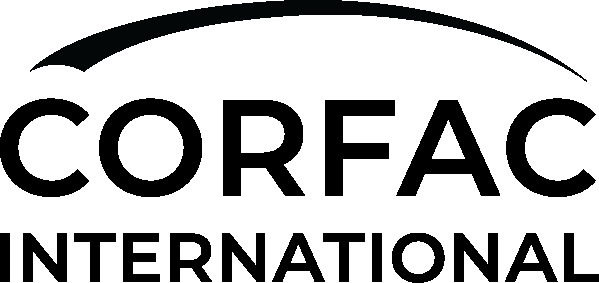Still A Tenant’s Market: CORFAC Brokers On The State Of Office Markets Around The World

The once-thriving office sector has had a rough time since 2020. Amid struggling occupancy and a high-interest-rate environment, office building values are declining and deals are uncertain.
But the magnitude of the issue varies among local markets, and some negative trends might be easing. Bisnow turned to brokers from CORFAC International’s global network for an on-the-ground look at market dynamics.
Navigating Debt Scenarios And The Pricing Divide
Deals in the office market are in flux largely due to high interest rates, said Hayim Mizrachi, president of MDL Group/CORFAC International in Las Vegas and 2023 president of CORFAC.
“Interest rates have halted office investment sales until pricing adjustment occurs,” Mizrachi said. “They have hampered businesses’ ability to expand with constrained lines of credit and today’s tougher conditions for business loans.”
Thomas G. Koelzer, partner at Tenant Advisors/CORFAC International in Chicago, said there is a wide gap between a seller’s expectations and a buyer’s value estimates.
“Some sellers are marketing their office properties via auction, since not enough market data via sales comps exists yet to support the usual building sale process,” Koelzer said.
In addition, office owners are stymied as loans mature, decreased operating income makes it difficult to reach debt service, and refinancing terms aren't attractive, he said.
Trends In Occupancy And How Owner-Operators Are Responding
The pandemic accelerated organizations' adoption of hybrid and remote work formats, even in traditional industries. The impact is being seen in depressed occupancy rates and utilization, but some locations might be rebounding.
“We are seeing London bounce back, especially the last four months with companies wanting their staff back and the staff wanting to come back for interaction,” said Charlie Thompson, managing partner with Farebrother/CORFAC International. “Take-up of office stock is improving.”
On the other hand, Todd Monahan, executive vice president and managing director for WCRE/CORFAC International in Philadelphia, said vacancy is increasing in just about every submarket in his region because as leases expire, companies are downsizing due to the impact of remote work.
“However, there are winners and losers, and trophy and A-plus buildings are benefiting from the flight to quality,” Monahan said. “Older B and C buildings are carrying significantly higher vacancies, with several in serious financial distress, as landlords are not able to refinance.”
The situation is a little different in the Philippines, where Trent Frankum, managing director of TFA Commercial Realty/CORFAC International, observed that occupancy rates have remained relatively flat despite an increase in leasing activity that is driven primarily by business process outsourcing companies.
“The lackluster change in occupancy rates is due to the new office supply of 214,000 square meters coming online in 2023, combined with continued downsizings and rightsizings as the transition to a permanent hybrid setup tries to find its optimal balance,” Frankum said.
Koelzer added that long-term leases will expire in the next few years for many tenants.
“As these leases run out, tenants are likely to downsize or vacate their spaces entirely,” Koelzer said. “This will compound the issues landlords will have with their lenders.”
It’s A Tenant’s Market
The market is decidedly in favor of the tenant. In response, well-capitalized owners have been adding amenities to make their buildings or office parks more attractive, Monahan said.
CORFAC brokers reported that landlords are sweetening deals with above-standard rent abatement, bigger improvement allowances and various nonfinancial concessions, such as signage and options to terminate, expand and contract.
“Occupiers will continue to prioritize fully fitted space,” Frankum said. “The main driver for this is the reduction of capital expenditures required by occupiers. However, another advantage is it allows companies to get into higher-quality buildings that they wouldn't usually have the budget for.”
Are We Seeing Any Glimmers Of Hope?
The office situation is a mixed bag, according to CORFAC members, and the global economic climate is affecting everyone.
“The investment market is still struggling, but more opportunities are hitting the market with some success, mainly from private wealthy individuals who are picking up assets at 20% to 40% discounted prices from 12 to 24 months ago,” Thompson said.
WCRE’s Monahan said the capital markets and landlords’ or investors’ ability to get financing or to refinance are significantly hindered by reduced demand and higher interest rates.
One positive note is that the pendulum is swinging back toward in-office work.
“Companies are still figuring out their workplace strategy in terms of how office space is used and how frequently, and what is the best location to maximize collaboration and in-person interaction,” Monahan said.
Employers will still need more flexible policies, although Mizrachi said that work-from-home will be less of an issue at this time next year.
While good news would be welcome for the office sector, the view from the ground shows there will be more storms to weather. One thing is clear: The need for experienced counsel is more critical than ever.
This article was produced in collaboration between CORFAC International and Studio B. Bisnow news staff was not involved in the production of this content.
Studio B is Bisnow’s in-house content and design studio. To learn more about how Studio B can help your team, reach out to studio@bisnow.com.

